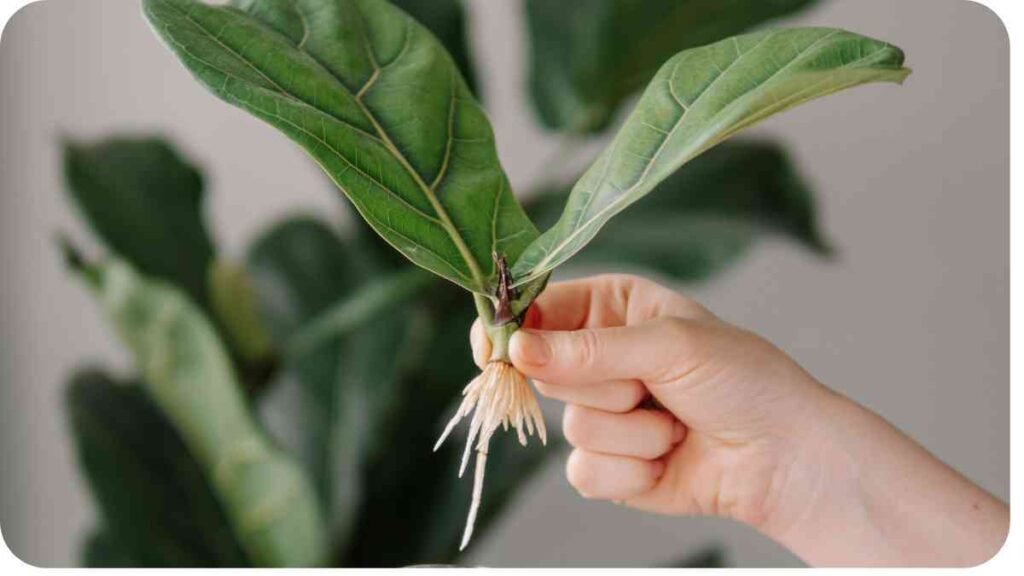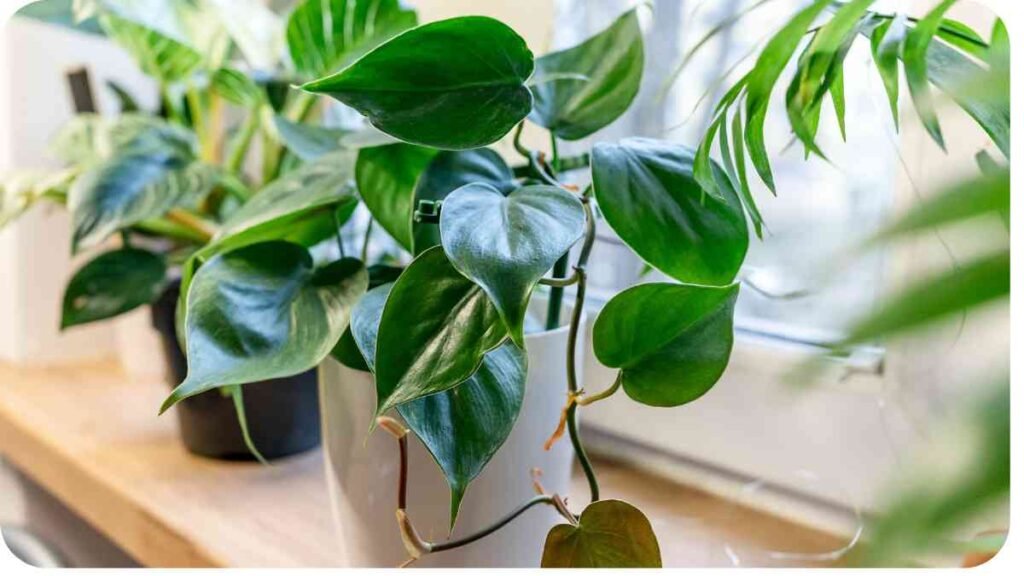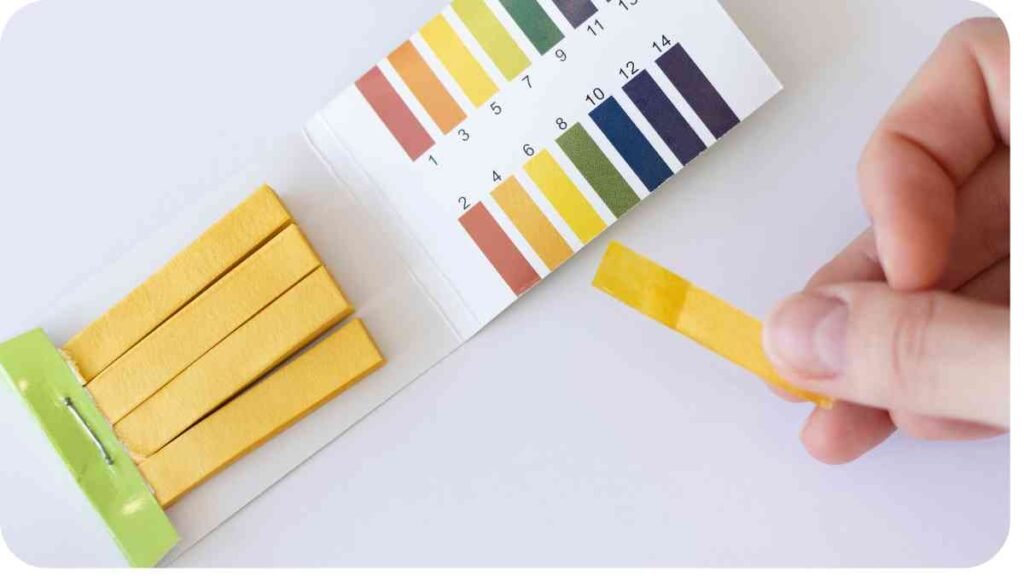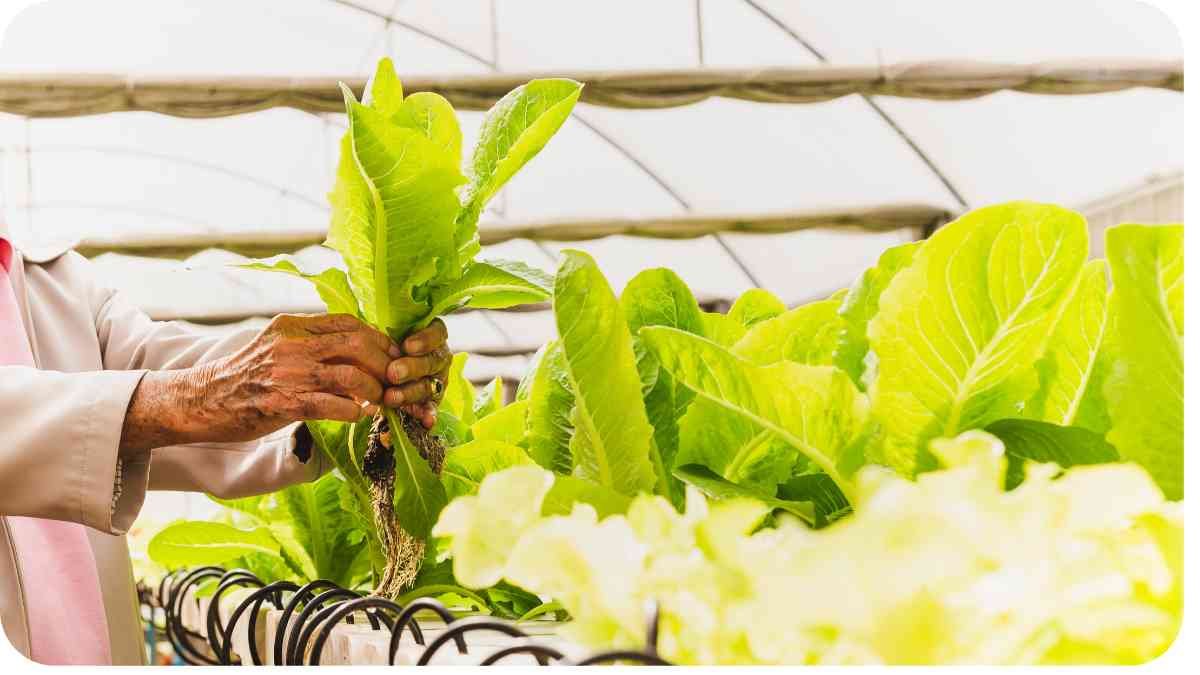Hydroponics is a method of growing plants without soil, using a nutrient-rich water solution to deliver essential nutrients directly to the plant roots. This soil-less approach offers several advantages over conventional gardening, including faster growth rates, higher yields, and reduced water consumption.
| Key Takeaways |
|---|
| Hydroponic gardening offers a sustainable and efficient |
| method for growing plants without soil, utilizing a |
| nutrient-rich water solution. By understanding the |
| principles of hydroponics and implementing best practices, |
| you can enjoy faster growth, higher yields, and |
| space-saving benefits in your indoor garden. Embrace |
| sustainable practices and explore the diverse range of |
| plants that thrive in hydroponic environments to create |
| a vibrant and flourishing oasis in your home. |
2. Understanding Hydroponic Houseplants

Before diving into hydroponic gardening, it’s essential to understand the principles behind this innovative technique. Unlike soil-based plants, which rely on soil to provide nutrients and support, hydroponic houseplants obtain their nourishment directly from water.
To ensure your Cryptomeria Globosa Nana thrives, follow this comprehensive guide on care practices. From watering to pruning, this guide covers all aspects of nurturing this plant variety.
2.1 Hydroponic Houseplants vs. Soil-based Plants
| Aspect | Hydroponic Houseplants | Soil-based Plants |
|---|---|---|
| Nutrient Absorption | Directly from Water Solution | From Soil |
| Growth Medium | Inert Substrate or Water | Soil |
| Watering Frequency | Controlled | Variable |
| pH Levels | Monitored and Adjusted | Influenced by Soil Type |
2.1 Hydroponic Houseplants vs. Soil-based Plants
| Aspect | Hydroponic Houseplants | Soil-based Plants |
|---|---|---|
| Nutrient Absorption | Directly from Water Solution | From Soil |
| Growth Medium | Inert Substrate or Water | Soil |
| Watering Frequency | Controlled | Variable |
| pH Levels | Monitored and Adjusted | Influenced by Soil Type |
Hydroponic houseplants thrive in environments where nutrient levels and pH levels are carefully regulated, resulting in healthier, more vibrant growth.
3. Benefits of Hydroponic Houseplants
The advantages of hydroponic houseplants extend beyond their ability to grow without soil. Let’s explore some of the key benefits:
- Faster Growth: Without the need to search for nutrients in soil, plants grown hydroponically can allocate more energy towards growth, leading to accelerated development.
- Higher Yields: Hydroponic systems provide plants with optimal conditions for nutrient uptake, resulting in increased productivity and larger harvests.
- Water Efficiency: Hydroponic setups typically use less water than traditional gardening methods, making them a more sustainable choice, especially in water-scarce regions.
- Space Savings: Hydroponic systems can be tailored to fit in small spaces, making them ideal for urban dwellers or those with limited gardening space.
Discover the art of xeriscaping to create a drought-tolerant landscape. This comprehensive guide offers insights into selecting drought-resistant plants and implementing sustainable landscaping practices for a low-maintenance garden.
4. Getting Started with Hydroponic Houseplants

Embarking on your hydroponic journey requires some essential tools and equipment. Let’s take a look at what you’ll need to set up your hydroponic system successfully.
4.1 Essential Tools for Hydroponic Gardening
| Tool | Purpose |
|---|---|
| Grow Lights | Provide artificial light for indoor plants |
| pH Meter | Measure the acidity or alkalinity of the nutrient solution |
| Nutrient Solution | Supply essential nutrients to the plants |
| Growing Medium | Support plant roots and provide stability |
| Water Pump | Circulate nutrient solution through the hydroponic system |
| Timer | Automate lighting and watering schedules |
4.1 Essential Tools for Hydroponic Gardening
| Tool | Purpose |
|---|---|
| Grow Lights | Provide artificial light for indoor plants |
| pH Meter | Measure the acidity or alkalinity of the nutrient solution |
| Nutrient Solution | Supply essential nutrients to the plants |
| Growing Medium | Support plant roots and provide stability |
| Water Pump | Circulate nutrient solution through the hydroponic system |
| Timer | Automate lighting and watering schedules |
Equipped with these essential tools, you’re ready to create your hydroponic haven. But before you start planting, it’s crucial to choose the right plants for your hydroponic setup.
5. Choosing the Right Plants for Hydroponics
While many plants can thrive in hydroponic environments, some are better suited to this growing method than others. Here are a few popular choices for hydroponic houseplants:
- Leafy Greens: Varieties such as lettuce, kale, and spinach perform exceptionally well in hydroponic systems due to their shallow root systems and fast growth rates.
- Herbs: Culinary herbs like basil, mint, and cilantro flourish in hydroponic setups, providing a convenient source of fresh flavors year-round.
- Tomatoes: Compact tomato varieties, such as cherry or grape tomatoes, can produce bountiful harvests in hydroponic containers with proper support.
- Peppers: Bell peppers and chili peppers are well-suited to hydroponic cultivation, offering a plentiful supply of vibrant fruits.
Transform your urban space with tips for gardening in small spaces. Learn how to maximize limited space effectively, utilizing vertical gardening and creative container solutions to create an oasis in the city.
6. Setting Up Your Hydroponic System
Hydroponic systems come in various designs, each offering unique advantages and challenges. Understanding the differences between these systems will help you select the best option for your space and goals.
6.1 Types of Hydroponic Systems and Their Features
| System Type | Description | Features |
|---|---|---|
| Deep Water Culture | Plants suspended in nutrient-rich water | Simple setup, low maintenance |
| Nutrient Film Technique | Thin film of nutrient solution flows over plant roots | Continuous nutrient supply, ideal for small plants |
| Ebb and Flow | Nutrient solution floods the growing medium periodically | Versatile, suitable for a wide range of plants |
| Drip System | Nutrient solution drips onto plant roots from above | Precise nutrient delivery, customizable irrigation schedule |
| Aeroponics | Plant roots are misted with nutrient solution | Efficient nutrient absorption, reduces water usage |
Each type of hydroponic system has its advantages and limitations, so it’s essential to consider factors such as space, budget, and level of involvement when choosing the right system for your indoor garden.
6.1 Types of Hydroponic Systems and Their Features
| System Type | Description | Features |
|---|---|---|
| Deep Water Culture | Plants suspended in nutrient-rich water | Simple setup, low maintenance |
| Nutrient Film Technique | Thin film of nutrient solution flows over plant roots | Continuous nutrient supply, ideal for small plants |
| Ebb and Flow | Nutrient solution floods the growing medium periodically | Versatile, suitable for a wide range of plants |
| Drip System | Nutrient solution drips onto plant roots from above | Precise nutrient delivery, customizable irrigation schedule |
| Aeroponics | Plant roots are misted with nutrient solution | Efficient nutrient absorption, reduces water usage |
Each type of hydroponic system has its advantages and limitations, so it’s essential to consider factors such as space, budget, and level of involvement when choosing the right system for your indoor garden.
Once you’ve selected a hydroponic system that suits your needs, it’s time to focus on nutrient management and pH regulation.
Revive your lawn and achieve lush, vibrant grass with this guide to restoring your lawn. From aerating to fertilizing, discover expert tips to rejuvenate your lawn after challenging seasons.
7. Nutrients and pH Management

In hydroponic gardening, maintaining the proper balance of nutrients and pH levels is crucial for plant health and productivity. Let’s explore how to ensure your plants receive the essential elements they need to thrive.
7.1 Essential Nutrients for Hydroponic Houseplants
| Nutrient | Function | Deficiency Symptoms |
|---|---|---|
| Nitrogen (N) | Promotes leafy growth and overall plant vigor | Yellowing leaves, stunted growth |
| Phosphorus (P) | Supports root development and flowering | Poor root growth, delayed flowering |
| Potassium (K) | Enhances fruit and flower quality | Weak stems, poor fruit development |
| Calcium (Ca) | Strengthens cell walls and prevents diseases | Blossom end rot in tomatoes, tip burn in lettuce |
| Magnesium (Mg) | Essential for chlorophyll production | Interveinal chlorosis, leaf curling |
| Iron (Fe) | Facilitates photosynthesis and enzyme function | Yellowing between veins, poor growth |
By providing a balanced nutrient solution and monitoring pH levels regularly, you can prevent nutrient deficiencies and ensure optimal growth for your hydroponic houseplants.
8. Lighting Requirements for Hydroponic Houseplants
In indoor hydroponic systems, adequate lighting is essential for photosynthesis, the process by which plants convert light energy into chemical energy to fuel their growth. While natural sunlight is ideal, artificial lighting can also provide the necessary illumination for healthy plant development.
8.1 Types of Grow Lights
| Light Type | Description | Suitable for |
|---|---|---|
| LED | Energy-efficient, long-lasting | All stages of plant growth, versatile |
| Fluorescent | Affordable, broad spectrum | Seedlings, leafy greens, low-light plants |
| High-Pressure Sodium (HPS) | Intense yellow-orange light | Flowering and fruiting stages, supplemental lighting |
| Metal Halide | Blue-white light spectrum | Vegetative growth, young plants |
When selecting grow lights for your hydroponic setup, consider factors such as light intensity, spectrum, and energy efficiency to provide the best lighting conditions for your plants.
8.1 Types of Grow Lights
| Light Type | Description | Suitable for |
|---|---|---|
| LED | Energy-efficient, long-lasting | All stages of plant growth, versatile |
| Fluorescent | Affordable, broad spectrum | Seedlings, leafy greens, low-light plants |
| High-Pressure Sodium (HPS) | Intense yellow-orange light | Flowering and fruiting stages, supplemental lighting |
| Metal Halide | Blue-white light spectrum | Vegetative growth, young plants |
When selecting grow lights for your hydroponic setup, consider factors such as light intensity, spectrum, and energy efficiency to provide the best lighting conditions for your plants.
In addition to providing adequate lighting, maintaining proper watering and nutrient levels is essential for the health and vitality of your hydroponic houseplants.
9. Watering and Maintenance Tips
Hydroponic systems require careful attention to ensure that plants receive the right amount of water and nutrients. Here are some tips to help you maintain your hydroponic garden:
- Monitor pH Levels: Regularly check the pH level of your nutrient solution and adjust as needed to keep it within the optimal range for plant growth.
- Inspect Roots: Periodically inspect the roots of your plants for signs of rot or disease. Trim any damaged or overgrown roots to promote healthy growth.
- Clean Equipment: Keep your hydroponic system clean by regularly flushing out nutrient reservoirs and disinfecting equipment to prevent the buildup of algae or pathogens.
- Prune Regularly: Remove any dead or yellowing leaves from your plants to promote airflow and prevent the spread of disease.
By staying vigilant and proactive in your maintenance routine, you can ensure that your hydroponic houseplants remain healthy and thriving.
Elevate your outdoor space with the art of container gardening. This guide provides inspiration and practical advice for creating stunning container arrangements that enhance the beauty of your patio or balcony.
10. Common Issues and Troubleshooting
Even experienced hydroponic gardeners may encounter problems from time to time. Here are some common issues you may encounter and how to address them:
10.1 Common Problems in Hydroponic Gardening and Solutions
| Problem | Symptoms | Possible Causes | Solutions |
|---|---|---|---|
| Nutrient Deficiency | Yellowing leaves, stunted growth | Inadequate nutrient supply | Adjust nutrient solution or pH levels |
| Root Rot | Brown, mushy roots | Overwatering, poor drainage | Improve airflow, reduce watering frequency |
| Algae Growth | Green film on surfaces, clogged tubing | Excessive light exposure, nutrient imbalance | Reduce light exposure, clean equipment regularly |
| pH Imbalance | Poor nutrient uptake, nutrient lockout | Fluctuating pH levels | Monitor pH regularly, adjust as needed |
| Pests and Diseases | Wilting, discoloration, visible pests | Infested plants or contaminated equipment | Use organic pest control methods, quarantine affected plants |
By identifying and addressing these common issues promptly, you can prevent them from affecting the overall health and productivity of your hydroponic garden.
10. Common Issues and Troubleshooting
Even experienced hydroponic gardeners may encounter problems from time to time. Here are some common issues you may encounter and how to address them:
10.1 Common Problems in Hydroponic Gardening and Solutions
| Problem | Symptoms | Possible Causes | Solutions |
|---|---|---|---|
| Nutrient Deficiency | Yellowing leaves, stunted growth | Inadequate nutrient supply | Adjust nutrient solution or pH levels |
| Root Rot | Brown, mushy roots | Overwatering, poor drainage | Improve airflow, reduce watering frequency |
| Algae Growth | Green film on surfaces, clogged tubing | Excessive light exposure, nutrient imbalance | Reduce light exposure, clean equipment regularly |
| pH Imbalance | Poor nutrient uptake, nutrient lockout | Fluctuating pH levels | Monitor pH regularly, adjust as needed |
| Pests and Diseases | Wilting, discoloration, visible pests | Infested plants or contaminated equipment | Use organic pest control methods, quarantine affected plants |
By identifying and addressing these common issues promptly, you can prevent them from affecting the overall health and productivity of your hydroponic garden.
Now that we’ve covered troubleshooting, let’s focus on strategies for maximizing growth and yield in your hydroponic setup.
11. Maximizing Growth and Yield
To achieve optimal growth and yield in your hydroponic garden, it’s essential to provide your plants with the right conditions and care. Here are some tips to help you maximize the productivity of your indoor oasis:
- Optimize Lighting: Ensure that your plants receive adequate light by positioning grow lights at the correct distance and adjusting the light spectrum as needed for different growth stages.
- Maintain Nutrient Balance: Regularly monitor nutrient levels and pH to prevent deficiencies or imbalances that could hinder plant growth.
- Prune and Train: Remove excess foliage and train plants to grow in a compact, productive manner to maximize space and airflow within your hydroponic system.
- Harvest Regularly: Harvest crops as they reach maturity to encourage continued growth and productivity. Regular harvesting also prevents overcrowding and competition for resources among plants.
- Rotate Crops: Rotate your crops periodically to prevent nutrient depletion and minimize the risk of pests and diseases.
By implementing these strategies, you can ensure that your hydroponic houseplants reach their full potential and provide you with a bountiful harvest year-round.
12. Sustainable Practices in Hydroponic Gardening
While hydroponic gardening is inherently more resource-efficient than traditional soil-based methods, there are still steps you can take to further reduce your environmental footprint:
- Water Conservation: Implement water-saving techniques such as recirculating nutrient solutions and collecting rainwater for use in your hydroponic system.
- Energy Efficiency: Opt for energy-efficient grow lights and timers to minimize electricity consumption and lower your carbon footprint.
- Reuse and Recycle: Repurpose materials whenever possible and recycle nutrient solution runoff to minimize waste and conserve resources.
- Companion Planting: Integrate companion plants into your hydroponic garden to naturally deter pests and promote biodiversity.
- Organic Practices: Use organic fertilizers and pest control methods to minimize chemical inputs and support soil health.
By incorporating sustainable practices into your hydroponic gardening routine, you can enjoy the benefits of fresh, homegrown produce while minimizing environmental impact.
13. Conclusion
Hydroponic gardening offers a rewarding and sustainable way to cultivate lush, low-maintenance greenery right in your own home. By harnessing the power of water and nutrients, you can unlock the secrets to bountiful harvests and vibrant growth, all without the need for soil. Whether you’re a seasoned gardener or a novice plant enthusiast, hydroponics provides an exciting opportunity to explore new possibilities and cultivate a deeper connection with nature.
As you embark on your hydroponic journey, remember to start with the basics: choose the right plants, set up your hydroponic system, and provide optimal conditions for growth. Regular maintenance and troubleshooting will ensure that your plants remain healthy and productive, while sustainable practices will help minimize your environmental impact and promote long-term viability.
With dedication, creativity, and a little bit of experimentation, you can create a thriving indoor oasis filled with fresh herbs, crisp greens, and vibrant vegetables all grown hydroponically. So why wait? Dive in and discover the joys of hydroponic houseplants today!
Further Reading
- Secrets of Hydroponics: Explore the latest insights and techniques in hydroponic gardening to elevate your indoor oasis.
- Exploring the Beauty of Hydroponic Gardening: Discover the beauty and versatility of hydroponic gardening with a variety of plants that thrive in water-based environments.
- Unveiling the Secrets of Thriving Pothos Plants: Delve into the secrets of growing lush and vibrant pothos plants in your hydroponic setup for a touch of greenery and elegance.
FAQs
How does hydroponic gardening work?
Hydroponic gardening involves growing plants without soil, using a nutrient-rich water solution to deliver essential nutrients directly to the plant roots.
What are the benefits of hydroponic gardening?
Hydroponic gardening offers benefits such as faster growth rates, higher yields, water efficiency, and space savings compared to traditional soil-based gardening methods.
What types of plants can be grown hydroponically?
A wide variety of plants can be grown hydroponically, including leafy greens, herbs, tomatoes, peppers, and even flowering plants like orchids.
What are the essential nutrients for hydroponic plants?
Hydroponic plants require essential nutrients such as nitrogen, phosphorus, potassium, calcium, magnesium, and iron to support their growth and development.
How can I troubleshoot common issues in hydroponic gardening?
Common issues in hydroponic gardening, such as nutrient deficiencies, root rot, algae growth, pH imbalance, and pests/diseases, can be addressed through proper monitoring, maintenance, and proactive measures.

Hellen James, a seasoned author at Unified Publishers LLC, brings a wealth of expertise to diverse niches. Specializing in pet care, outdoor adventures, lifestyle, wellness, and culinary delights, Hellen crafts insightful and engaging content that unlocks the full potential of readers’ interests. Explore, learn, and thrive with Hellen James.

